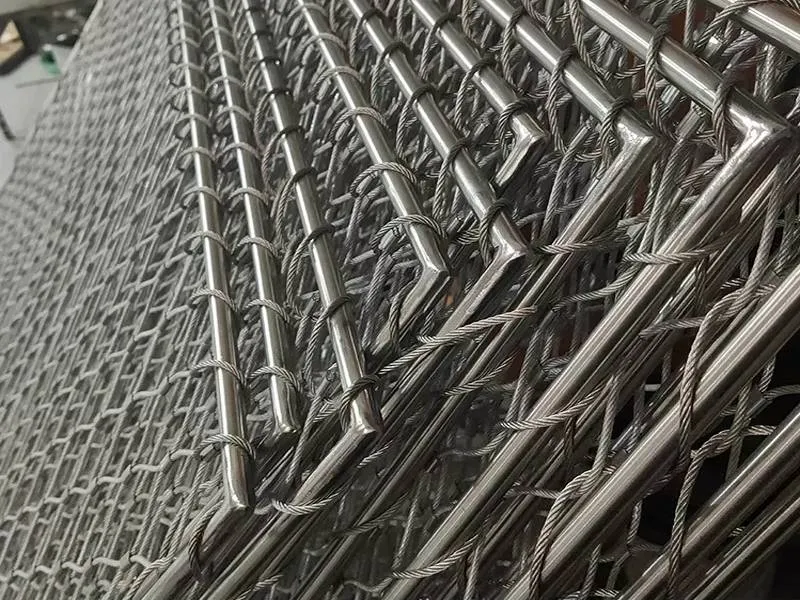- Industrial zone, South of Anping Town, Hengshui, Hebei, China.
- sales@hfpetromesh.com
- +86-18931809706
Calculating Weight of Aluminum Grating for Structural Applications and Design Considerations
Understanding Aluminum Grating Weight Key Considerations and Benefits
Aluminum grating is an essential material used in various industrial, commercial, and residential applications. Known for its strength, durability, and lightweight nature, aluminum grating has become a popular choice for flooring, walkways, platforms, and other structural uses. One of the primary factors influencing its application is its weight, which can significantly impact installation, maintenance, and overall performance. This article will explore the weight of aluminum grating, factors affecting it, benefits, and considerations for choosing the right type for your needs.
The Weight of Aluminum Grating
The weight of aluminum grating can vary significantly based on several factors, including the type of grating, the extrusion thickness, and the spacing between the bars. Generally, aluminum grating is designed to be lightweight while maintaining high strength-to-weight ratios. This aspect is particularly critical in applications where reducing the load on supporting structures is essential.
For instance, aluminum bar grating typically ranges from 1.5 to 5.5 pounds per square foot, depending on the inherent design and construction features. Lightweight options make aluminum grating easier to handle and install compared to heavier alternatives, such as steel grating. The lighter weight also translates to lower shipping costs and easier transportation, making it an economically advantageous choice for many projects.
Factors Affecting Aluminum Grating Weight
1. Material Composition Aluminum grating is often made from 6061-T6 or 6063-T5 aluminum alloys, which provide different properties and densities. The choice of aluminum alloy can influence the grating's weight, strength, and corrosion resistance.
2. Thickness of the Grating The thickness of the aluminum bars and the overall design will impact the weight. Thicker bars usually provide enhanced strength and durability but also add to the overall weight.
3. Type of Grating There are several types of aluminum grating, including welded, riveted, and heavy-duty options. Each type's construction method and design will affect its weight.
4. Panel Size and Configuration The dimensions of the grating panels, as well as the spacing between the bars, affect the overall weight. More tightly spaced bars lead to a heavier product, while more open designs tend to be lighter.
Benefits of Lightweight Aluminum Grating
aluminum grating weight

1. Ease of Installation The lightweight nature of aluminum grating simplifies transportation and installation. Workers can easily maneuver and position the grating without requiring heavy lifting equipment.
2. Corrosion Resistance Aluminum is naturally resistant to corrosion, making aluminum grating suitable for various environments, including marine, chemical, and high-humidity locations. This durability reduces the frequency and cost of maintenance.
3. Cost-Effectiveness While the initial cost may appear higher than some alternatives, the long-term maintenance savings and reduced labor costs during installation often offset the price, making aluminum grating a cost-effective solution.
4. Design Versatility Aluminum grating comes in various designs and finishes, allowing for customization according to specific aesthetic and functional needs. Whether for industrial settings or architectural applications, aluminum grating can meet diverse requirements.
5. Recyclability Aluminum is a highly recyclable material, making aluminum grating an environmentally friendly choice. End-of-life disposal is easier and more sustainable compared to other materials.
Considerations for Choosing Aluminum Grating
When selecting aluminum grating, it is essential to consider the specific requirements of your project. Evaluate the load-bearing capacities, environmental conditions, and installation logistics. Consulting manufacturers or suppliers can provide insights into the best types and configurations of aluminum grating to meet your needs.
Additionally, consider certifications and industry standards that the grating may need to comply with, ensure product quality, and safety during use.
Conclusion
Aluminum grating offers an impressive combination of lightweight advantages, durability, and versatility, making it a popular choice for various applications. Understanding the factors affecting aluminum grating weight is crucial in making informed decisions that ensure performance and safety in your project. By carefully considering your specific requirements and consulting with experts, you can take advantage of the benefits that lightweight aluminum grating brings to the table.
-
The Power of Pyramid Shaker Screen - A 3-Dimensional SolutionNewsOct.24,2024
-
Exploring the Versatility and Durability of Steel GratingNewsOct.24,2024
-
Revolutionizing Drilling Efficiency with Steel Frame Shaker Screens for Mud Shale ShakersNewsOct.24,2024
-
Potential of Shale Shaker ScreensNewsOct.24,2024
-
Offshore Pipeline Counterweight Welded Mesh - Reinforced Mesh in Marine EngineeringNewsOct.24,2024
-
Revolutionizing Offshore Pipeline Stability with Concrete Weight Coating MeshNewsOct.24,2024
